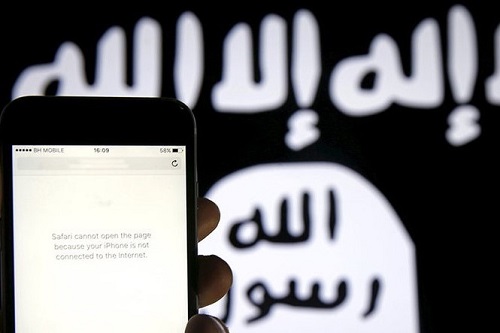Reuters photo
By
Ricardo Swire
CARICOM intelligence officials have recognized that heralded ground war successes in Syria and Iraq against the Islamic State (IS) have not interrupted the militant extremists’ electronic recruiting. On May 1, 2018 “Operation Roundup” allowed Syrian Democratic Forces supported by American air power to get rid of IS fighters from the Iraq/Syria border. American unmanned aerial vehicles (UAVs) provided the capability to watch potential IS targets, unmanned combat aerial vehicles (UCAVs) monitoring potential targets with capability to strike in real time.
The “shadow war” against West African and Afghan Islamic State cells has failed to stifle the group’s ability to mobilize global followers via social media. The Islamic State’s online messaging promotes multiple radical and brutal themes. In June 2014 the organization’s fighters overran and occupied Mosul. Its propaganda department immediately flooded open platforms, such as Twitter and YouTube, with thousands of videos. The cyber messages focused eighty percent on Jihad and fourteen percent on Utopian imagery.
Not long ago international counterterrorism and intelligence officials agreed IS’ propaganda quantity and quality have declined. The terrorist group’s attention shifted to promotion of “Lone Wolf” attacks. Trends show a low scale encrypted messaging App called “Telegram” is one favoured IS social media forum. In February 2015 the group published 892 propaganda pieces that included videos, photos, audio and written articles. The digital footprint carried a 53 percent focus on “Utopia” and the “Caliphate”; 39 percent glamorized Jihad.
In February 2018 IS’ online propaganda registered 570 broadcasts, a 36 percent decline. The militant extremists adapted to survive. Invisible social media converts planned and executed violent ideology. The new face of IS revealed in sudden attacks on restaurants, hotels, stadiums and other public venues or “soft targets.” Some battle hardened jihadists returned to native homes, including Caribbean islands, from the brutal war zones. There are many soft targets in the Caribbean, where Lone Wolves or small cells can target and attack as part of the broader global IS campaign.
The Caribbean Community (CARICOM) Implementing Agency for Crime and Security (IMPACS) averaged since 2013 approximately 200 Caribbean nationals travelled, either to Iraq or Syria, to fight on behalf of the Islamic State’s militant crusade. Names of such individuals were placed on regional and international watch lists and entered in special intelligence databases. As an international countermeasure 66 countries co-sponsored the United Nations (UN) Security Council Resolution 2396.
The formal document authorized immigration processes to repel returning Islamic extremist fighters. “Self Directed” or “Lone Wolf” terrorists, inspired by Al Qaeda or the Islamic State, also addressed in the UN Resolution. Another control mechanism is utilization of Passenger Name Record (PNR) data, aka the information provided to an airline by an individual when a ticket is booked. Such national security tool prevents “broken travel,” which is the popular tactic of using convoluted routes to evade detection.
In today’s international counterterrorism approach CARICOM internal security officials are concerned about the reality that America and its allies fight an Islamic State militant extremist enemy, who does everything possible to use civilians as shields. The terrorist outfit has learned from Afghanistan, plus previous clashes in Iraq, how to minimize exposure to US intelligence assets. Evidence shows IS militants are more than willing to travel with civilians, co-locate among them and mimic civilian movement patterns to cover their own clandestine activities.
Ricardo Swire
Ricardo Swire is the Principal Consultant at R-L-H Security Consultants & Business Support Services and writes on a number of important issues.



No Comments Yet!
You can be first to comment this post!